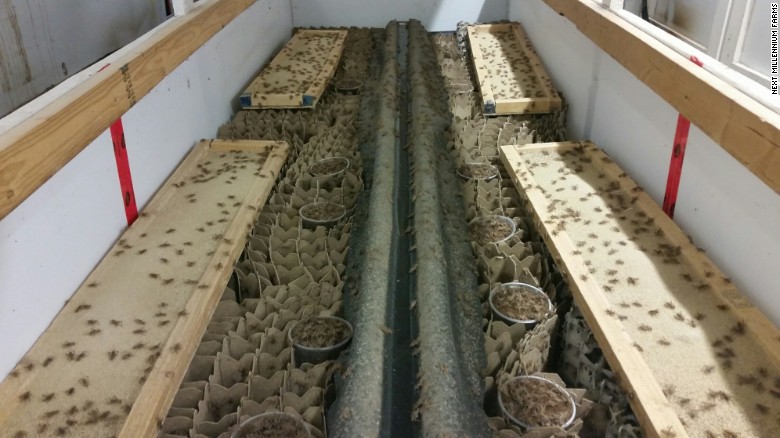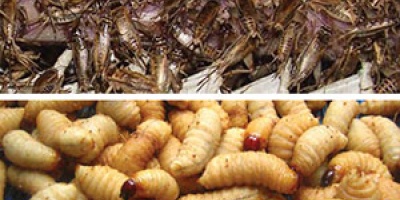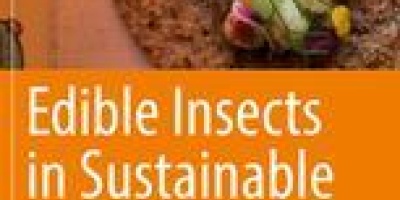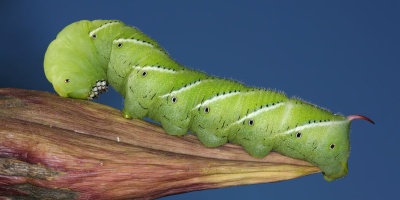In this piece, Wendy Lu McGill expands on her overview of insect farming by diving into the nuances of regional variance. You can read her first piece on insect cultivation here.
Wendy is a PhD researcher at the Plant and Agribiosciences Research Centre (PABC) working with Prof. Charles Spillane and Dr. Peter McKeown at the National University of Ireland Galway.

Globally, around 90% of insects that are consumed as food are collected in the wild. At the same time, insect farming for food (and feed) is a growing industry worldwide, including in regions where insect eating is not a common practice, primarily Europe and North America. In the latter, farmed insects are principally used in food products, many of which utilize ground insect powder as a nutritious additive to common foods like cookies, crackers or protein bars. In places where farming is less common, but eating wild-harvested insects is routine, i.e. Latin America, Sub-Saharan Africa and parts of Asia, whole insects are more commonly consumed.
China and Thailand are notable exceptions to places where insect consumption is routine, in that both countries also have large numbers of insect farms, both small and medium enterprises, and industrial scale farms.
Given the prevalence of food and nutrition insecurity in places where insect consumption is high, farming insects appears to be one of several possible remedies to pursue. Several businesses and non-governmental organisations are indeed doing so, particularly in African countries and Asia.
 However, a transition from mostly wild-caught to more farmed insects could present challenges, including consumer perception of the food’s nutritional value and what effect farming could have on supply. Market prices for seasonally available insects are currently very high in many low income countries and farmed insects available year round could lower these prices. Setting up adequate food safety regulations and appropriate supply chains could also be challenges. Regulations and consumer perception of insects as food will be discussed in more detail in future blog posts.
However, a transition from mostly wild-caught to more farmed insects could present challenges, including consumer perception of the food’s nutritional value and what effect farming could have on supply. Market prices for seasonally available insects are currently very high in many low income countries and farmed insects available year round could lower these prices. Setting up adequate food safety regulations and appropriate supply chains could also be challenges. Regulations and consumer perception of insects as food will be discussed in more detail in future blog posts.
Breakdown by location:
Much of what is known about frequently consumed insects in specific regions is based on recorded edible species, most of which will have been harvested from the wild. However, this curated database does little to illuminate the state of farming insects in these areas, and therefore more information needs to be collected.
Latin America
Although Latin America currently has the most recorded edible insect species and the practice of eating them is widespread, there are as of yet few projects or businesses exploring farming edible insects.
Brazil, Colombia, Ecuador, Mexico, Peru and Venezuela are considered to be countries with the most insect eating, and some hypothesize that biological and human ethnicity diversities play a role in this abundance. Insect eating is most prevalent in tropical areas within these countries, where biodiversity of insects is higher than in other ecosystems in the region, and various ethnic groups continue long-observed habits of insect consumption.
One notable farming effort in Latin America is Aspire Food Group’s farming project to raise chapulines, a very popular local edible grasshopper that is collected in the wild, often from pesticide-laced agricultural fields.
Sub-Saharan Africa
Insect farming remains fairly uncommon in Sub-Saharan Africa, with a few notable exceptions, even though the continent is considered one of the major areas for insect eating. Approximately 470 species are recorded as edible in the 34 countries where insect eating is common.
In view of the high levels of food and nutrition insecurity in many African countries, the UN and international NGOs have called for an increased focus on insect farming, including in the UN FAO’s 2013 report, Edible Insects - Future prospects for food and feed security and the INGO, International Centre for Insect Physiology and Ecology, in a 2105 article published in the Journal of Insects as Food and Feed, among others. Cultivation of insect species could not only improve access to food and nutrition but also provide opportunities for livelihoods. Current seasonally available insect market prices are often higher per kilogram than beef, with the caveat that this may be related to its scarcity as a seasonal, wild-caught food and cultivation will likely affect prices.
Projects that have explored insect cultivation at the small to medium enterprise levels have focused on insect species that are common in many places, including palm weevil larvae and various species of grasshoppers and crickets, as well as caterpillar cultivation.
Overall, as in Latin America, compared with consumption, insect farming in African countries is not yet a common practice.
Asia:
 As a region, several countries in Asia have high levels of insect consumption and unlike in Africa, there are countries in Asia that have active insect farming. Thailand and China, detailed below, are notable for their number of farms, and to a lesser degree, so is the Laos Republic.
As a region, several countries in Asia have high levels of insect consumption and unlike in Africa, there are countries in Asia that have active insect farming. Thailand and China, detailed below, are notable for their number of farms, and to a lesser degree, so is the Laos Republic.
While a wide range of species are consumed in the region, much farming focuses on a limited number of species, particularly house crickets and palm weevil larvae, perhaps due to the ease of raising them as domesticated micro-livestock relative to other edible insect species.
However, the majority of insects eaten in Asia are still wild caught, and as in African countries, there is a parallel of relatively high rates of food and nutrition insecurity. There are possibilities for income generation, through creating a value chain i.e. the steps from raw insect to processed products sold in a market. This could be of particular value for small shareholder farmers, as is proven by the Thai example, detailed below.
China
China has a large number farms raising insects for food (and feed – to be discussed in a future blog), as well as businesses raising insect species used in so-called “traditional medicine” applications, such as an estimated 100 farms raising cockroaches for medicinal and cosmetic uses.
Thailand
There are an estimated 20,000 small to medium scale cricket farms in Thailand, and about 5000 palm weevil larvae farmers, many operating since the 1990’s when a government agricultural extension program trained farmers in insect rearing and supported them in setting up farm enterprises. Additionally, demand for insects increased through migration patterns, as people from areas that traditionally ate insects migrated to tourist areas and urban centres for work, in particular groups from Northern Thailand. The country is also notable for having a fairly well developed value chain from farmer to market and/or farmer to consumer product companies. This value chain is debatably the most well developed in the world at present.
Europe & North America
Insect farming in North America and Europe is divided into pet feeder insects, e.g. for pet reptiles and snakes, and human grade insects, but both primarily focus on two species: house crickets and mealworms.
There are an estimated 30 large farms in North America rearing pet feeder insects, while an estimated 12 so-called human-grade insect farms are currently operational. Of these, about three farms produce at scales large enough to produce tens of thousands of kilograms of insects per month and supply much of the growing cricket powder market.
Similarly, there are an estimated 40 companies in Europe farming, producing consumer products or some combination of the two.
 In both North America and Europe, these businesses range from insect farmers, mostly raising crickets and mealworms, to those producing processed goods, particularly from milled and ground crickets, i.e. cricket powder. This is sometimes also referred to as cricket flour although it is not a suitable substitute for wheat flour on a one to one basis since it has higher protein and fat content makes it heavier than wheat flour and thus not a good substitute. In Europe, a significant number of companies are raising mealworms for food products using both whole and powdered mealworms; at the moment this species is less commonly raised in North America for food.
In both North America and Europe, these businesses range from insect farmers, mostly raising crickets and mealworms, to those producing processed goods, particularly from milled and ground crickets, i.e. cricket powder. This is sometimes also referred to as cricket flour although it is not a suitable substitute for wheat flour on a one to one basis since it has higher protein and fat content makes it heavier than wheat flour and thus not a good substitute. In Europe, a significant number of companies are raising mealworms for food products using both whole and powdered mealworms; at the moment this species is less commonly raised in North America for food.
At present, industrial insect farming at any scale and for all species remains dependent on manual labour and technological innovations are generally lacking. In many ways, industrial insect rearing differs little from household operations except in scale and size of operations. This reliance on human labour is credited as a primary driver in keeping insect prices high and preventing insect farming from realising expected efficiencies to be expected from its high feed-to-meat conversion ratio and the overall low resource needs for farmed insect species.
Future outlook for insect farming
In general, insect farming is widely seen to have as yet unfulfilled potential to increase food and nutrition security and provide a steady income to farmers, both in places where eating insects is common and where it is not. Additionally, as mentioned in the first blog of this series, insects in general require considerably fewer resources as compared to traditional livestock to produce the same amount of food, making insect farming a practice that potentially contributes to the development of future climate resilient agricultural systems.
However, many questions remain unanswered and more work is needed to figure out how insect farming will work in practice rather than just in theory. Given that the majority of edible insects are harvested from the wild, how might consumers in places where insects are commonly eaten perceive farmed insects’ inherent value in terms of nutrition as well as less tangible factors, such as whether farmed insects are of similar quality as wild caught? We may be able to draw on lessons learned from analogous efforts such as consumer perception studies of farmed salmon as compared with wild caught. Another unanswered question is how farming could impact prices of insects that previously were only available as seasonal, wild caught food.

In places where insects are not commonly consumed, i.e. North America and Europe, consumer perception research is needed to better understand how, if at all, more people would be willing to add insects as part of their diets and what forms would be most palatable.
Additionally, there is a near total lack of regulations for insect farming, and insect-based foods, around the world. In most places insects as food are neither regulated nor prohibited. A future blog will explore this topic in more detail, but in summary, only the European Union has started a comprehensive regulatory process that will likely take some years and a great deal of funding before it is resolved. In some EU countries and the UK, insect based food products are prohibited from being sold until EU regulations are established [NB – in light of the UK’s recent referendum, the future influence of EU regulation is unclear. See this blog by Tim Lang on Brexit and food policy http://www.fcrn.org.uk/fcrn-blogs/tim-lang/food-brexit-and-consequences…].
Entomological research could help enhance insect rearing techniques, and similarly, research on how to increase automation in insect farming, particularly in places where labour costs are high, could help increase efficiencies.
There is a general consensus among researchers from a wide variety of disciplines that insect farming holds potential to increase access to nutritious food through a farming practice that has fewer environmental impacts than traditional livestock production. Much of this potential will remain unharnessed however until more farmers start to raise insects for food and feed, and we gain greater understanding of how farming systems might optimally contribute to the development of nutritious food, livelihoods and environmental sustainability.
Please provide your views and feedback on this post in the comments box below. To be able to comment you need to be sure you are signed in (if you are a member already) or that you register a profile. If you have forgotten your login details do get in touch and we will sort you out.
Do you want to write a blog for the FCRN? It can be about research you’ve published, projects that you are involved in – or you can just use the blog format to highlight some ideas you’re developing that you’d like feedback on. If you’d like to discuss more, contact Marie Persson mariepersson@fcrn.org.uk











Post a new comment »